On this page you can find a list of all official Expansion Packs and Addons by RailSimulator.com.
All can be purchased on Steam: RailSimulator.com Publisher Catalogue
Routes[]
Locomotives[]
Diesel[]
| Description | |
|---|---|
|
Debuting in 1993, the C44-9Ws proved very popular with many North American railroads featured in this Add-on. Over their production life, the Dash 9s have amounted to almost 2500 units across more than 10 operators on 3 continents around the world. Sadly these numbers are diminishing all the time as this power-horse is replaced by a more efficient model known as the Evolution Series. Due to stricter emissions requirements introduced in 2005, the production of the Dash 9 was replaced by the GE ES44DC. Experience one of the greatest workhorse locomotives of modern North American freight with the Dash 9 Locomotive Add-on for RailWorks. |
|
Built by the General Motors Electromotive Division as a replacement of the SW1200, the SW1500 was intended for switching duties, and was capable of light branch line work as a road switcher. It was a development of the SW1200 and previous SW-series switchers dating back many years earlier, and was fitted with a 1500 horsepower two-stroke V-12 diesel engine. A total of 808 examples were built from 1966 to 1974, serving industrial and railroad operators across the length and breadth of the United States, with approximately a quarter of the whole production initially purchased by the Southern Pacific Railroad. A huge number of SW1500s can still be found in use today, proving the durability and versatility of this old locomotive design. |
|
For more than 150 years, the BNSF Railway has provided the backbone of US freight transportation, delivering all manner of goods across 28 states and two Canadian provinces. These BNSF Heritage schemes and locomotives stunningly reproduce one of the classic American marks. Remark: Included with Railworks if you buy on Steam. |
|
Arguably the most famous railroad in the world and perhaps the most recognized livery ever applied to a locomotive, 3DTrains is pleased to present these beautiful Atchison, Topeka & Santa Fe passenger F-Unit locomotives recreated for Rail Simulator and RailWorks in stunning detail. Santa Fe began taking delivery of passenger F7's in A-B-B-A lash-ups in September 1949. The initial order of locomotives, designated 37-Class, were delivered with 36" dynamic brakes and horizontal grilles, and were numbered 37LABC through 41LABC. Santa Fe's 300-Class locomotives, delivered in October 1949, were identical in appearance to the 37-Class units, except they were configured in 3-unit A-B-B sets, numbered 300LAB through 305LAB. That these were 3-unit sets was the only reason why these locomotives were assigned a separate class. Remark: Can also be purchased from 3D Trains. |
|
The SD40-2 shares the same basic superstructure as the SD38-2 as it uses the same 16-645E3 engine (with turbo charging modifications). The Dash 2’s (-2) also have longer front and rear ‘porches’ than other models, making for distinguishing features when comparing locomotives. Another alteration from previous designs is the three radiator grilles mounted on the roof, where previously there were only two. |
|
The Atchison, Topeka and Santa Fe Railroad owned over 13,000 miles of track which included some of the most heavily and strategically used routes throughout the West. In 1994 Santa Fe agreed to merge with north-western giant, Burlington Northern, to form the Burlington Northern Santa Fe Railway, now known as simply BNSF. Santa Fe's renowned pre-merger Warbonnet livery was made in several variations ranging from the silver and red with yellow trim to the blue and yellow. It is the blue and yellow variant, sometimes known as the yellow bonnet livery, which is supplied in this pack. |
|
The EMD SD40-2W is a Canadian-market version of the SD40-2 diesel-electric locomotive, built for the Canadian National Railway by the Diesel Division of General Motors of Canada Ltd. (formerly General Motors Diesel) of London, Ontario. A total of 123 were constructed between May 1975 and December 1980. The major difference between the SD40-2W and a regular SD40-2 is the fitment of a wide-nose Canadian ‘comfort cab’, denoted by the 'W' in the model name. The Canadian comfort cab or wide cab is a broad-nosed cab design found on several diesel locomotive types. It occupies the entire width of the locomotive, and typically has an access door on the front. |
|
The Norfolk Southern Railway is a major Class 1 railroad in the United States, owned by the Norfolk Southern Corporation. The company operates 21,500 route miles in 22 eastern states, the District of Columbia and the province of Ontario, Canada. The most common commodity hauled on the railroad is coal from mines across several states. The railroad also offers an extensive intermodal network in eastern North America. The "high nosed" variant of the SD40-2 is so called due to the lack of any traditional low bonnet in front of the cab area. This restricts visibility from the cab by removing the two centre windows found on more standard SD40-2 types. |
|
The EMD SD70 is a series of diesel-electric locomotives produced by the Electro-Motive Division (EMD) of General Motors beginning in 1992. Over 4000 locomotives in this series have been produced, and the type continues to be produced though EMD is no longer owned by General Motors. Introduced in 2004, the SD70ACe was designed to meet the latest EPA emissions regulations and featured a few other modifications over previous models, including AC electric motors for increased reliability and HTSC bolster-less trucks for simpler maintenance. Rated at 4,300 horsepower, the SD70ACe is in use on a number of railroads across the US. Remark: Regarded as SD70 Volume 1 Addon. |
|
The SD70 series of diesel locomotives, launched by the General Motors Electromotive Division in 1992, have become a familiar sight across the length and breadth of the United States, with over 4,000 of the different variants having been produced to date. This add-on includes 3 main variants: the SD70MAC, with AC traction motors, the SD70ACe also with traction motors but developed to comply with new emissions regulations, and the SD70M-2 which is based on the SD70ACe but which has DC traction motors. This add-on depicts the various external detail differences between the models, and depicts them in realistic prototypical BNSF, Norfolk Southern and Canadian National color schemes. This add-on is a great companion for the SD70ACe add-on, also available on Steam, allowing you to add realism to your RailWorks 2 yards and consists with different SD70 versions working together. Remark: The SD70Mac is included as SD70 Volume 3 Addon. |
|
The F40PH California Zephyr brings together one of the most famous names and one of the most recognisable shapes in US railroading for Train Simulator! Built by the General Motors Electro-Motive Division from 1975 into the early 1990s, the F40PH was built specifically for Amtrak to haul short passenger services. However, it soon proved its versatitity and before long the F40PH was hauling long-distance passenger trains such as the famous California Zephyr. Other operators also ordered a number of these locomotives, including Via Rail Canada, Go Transit and NJ Transit. With a 3,000 horsepower diesel engine, the F40PH had a top speed of just over 100mph and though most of Amtrak's units have been retired, they have continued service with other owners across North America including CSX, Metra and MBTA. The California Zephyr has been a legendary name for railroad fans since it first ran in 1949. Running from Chicago, Illinois to Emeryville, California and passing through 7 states, the current Amtrak California Zephyr first ran in 1983 and still rolls along its scenic 2,400-mile route every day. The F40PH for Train Simulator recreates the Amtrak Phase III colour scheme and includes Amtrak Super-Liner Phase II and Phase III passenger cars including coach, diner and sleeper, and baggage cars. Drive the including scenarios for the Donner Pass (also available on Steam) or select Quick Drive and drive the F40PH wherever you want. | |
Steam[]
| Description | |
|---|---|
|
The earliest tank locomotives date from the 1840s, one of the first of which was used to build branch lines along the London, Brighton and South Coast Railway in the UK. In spite of the early belief that such locomotives were inherently unsafe, the idea quickly caught on, particularly for industrial use and five manufacturers exhibited designs at an Exhibition in 1851. Tank locomotives are popular with heritage railways for a number of reasons. They are usually cheaper to purchase than a tender locomotive due to their smaller size. With their limited fuel and water capacity, they were not favoured in areas where long runs between stops were the norm, but have remained common in the UK, France, and in particular Germany, where some attained quite prodigious size. |
|
Introduced in 1928 by the London, Midland and Scottish (LMS) Railway, the 2P was a 54-ton steam locomotive designed with a 4-4-0 wheel configuration, and was intended for light passenger duties. The 2P proved its worth on such duties and continued in service long after nationalization and the formation of British Railways. It became a familiar sight to passengers and enthusiasts across the network, with more than 130 being built and some remaining in service until 1962. |
|
Designed by Arthur H Peppercorn, of the London & North Eastern Railway (LNER). They were the last in a line of famous express passenger steam locomotives for the East Coast Main Line. The original 49 Peppercorn Class A1s were built at Doncaster and Darlington for British Railways at the end of the 1940s. However, the rapid onset of dieselisation in the 1960s meant that all were scrapped, after a life of only 15 years. The A1 Steam Locomotive Trust, founded in 1990, has built a completely new 'A1' to the original design and with the help of the latest technology. Fitted with additional water capacity and the latest railway safety electronics, Tornado is fully equipped for today’s main line railway. |
|
In the 1930s, with freight traffic increasing, the Union Pacific Railroad was struggling to get trains over the rugged grades of the Wahsatch Mountains. To stay competitive, a more powerful locomotive was needed to speed up the railroad and to reduce the rising cost of helpers and extra trains. An original design of 4-12-2 was proposed, but after much deliberation, an arrangement of 4-6-6-4 was finalised and the Challenger was born. In August 1936, number 3900 was the first to enter revenue earning service with a refrigerator train from Council Bluffs. A total of 252 were eventually operating around North America. |
|
The Southern Pacific Cab Forward is a classic oil-burner from the glory days of US Steam, and now you can this distinctive heavyweight over the Donner Pass in Train Simulator. The Donner Pass route became ever more important as California's economy grew, and the Southern Pacific Railroad soon found that more power was needed to haul increasingly heavy trains through the Sierra Nevada. 2-8-8-2 Mallet locomotives answered the call, but the route's many long tunnels and snow sheds caused new problems: locomotive cabs were filling with fumes from the smokestack while inside the tunnels, so the solution was to build a locomotive with the cab at the front-- the 'Cab Forward'. It may sound simple, but the design required a number of complex technical solutions: the oil-fired firebox was mounted at the leading end of the boiler, so it was supplied with oil via low-pressure pipework running all the way from the rear tender. The Cab Forward for Train Simulator represents the (Articulated Consolidation) AC-10 AC-11 and AC-12 types. It includes both clean and weathered variants, accurate in-cab controls with realistic sounds, and five scenarios for the Donner Pass. | |
Electric[]
| Description | |
|---|---|
|
The Class 86 is a powerful locomotive from the early days of electric main line traction in Britain. Originally known as AL6 (the 6th design of AC locomotives) under the earlier BR classification, the Class 86 was built to operate on the then newly-electrified West Coast Main Line, and formed part of the effort replace steam locomotives by 1968. Throughout the 1970s the Class 86 was used on express passenger services as well as freight but with the demand for electric locomotives increasing, by the 1980’s the need for a standard fleet saw all the Class 86’s fitted with improved suspension giving them greater operational flexibility. In the late 1980s to early 1990s the majority of Class 86/4s were dedicated to freight activity and the majority of Class 86s are now owned by Freightliner. The Class 86 for RailWorks 2 comes with two Freightliner liveries as well as RailFreight Grey, Rail Express Services and BR Blue liveries. Also included are new FSA flat wagons and Mk2 coaches. |
|
The Class 143 (originally listed on introduction by the Deutsche Reichsbahn as Class 243) is a general purpose electric locomotive. With over 600 having been produced, the Class 143 is one of the most popular and universal of German electric locomotives. Designed and built by VEB Lokomotivbau und Elektrotechnische Werke Hennigsdorf, and introduced in the former East Germany in 1985 by the Deutsche Reichsbahn, the 143/243 had a maximum running speed of 120km/h (75mph) to comply with the maximum line speed across the network. Following the reunification of Germany, the type was used across the former West Germany and designated the Class 143. The 143 operated on many routes including the Schwarzwaldbahn, the Höllentalbahn and the Rhein-Ruhr S-Bahn. A number of examples were also retained for use in measuring and experimental operations. The Class 112 is a subclass of the 143, based on the same prototype but with a higher running speed of 160km/h (100mph) to take advantage of the upgraded lines to Berlin introduced following German reunification. Production was taken over at this time by AEG GmbH. Their higher speed made them ideal for use on long-distance InterRegio trains. |
Scenario Packs
| Description | |
|---|---|
|
<img data-rte-meta="%7B%22type%22%3A%22image%22%2C%22wikitext%22%3A%22%5B%5BFile%3A7fscenario.jpg%5D%5D%22%2C%22title%22%3A%227fscenario.jpg%22%2C%22params%22%3A%7B%22caption%22%3A%22%22%2C%22alt%22%3A%227fscenario.jpg%22%7D%7D" data-rte-instance="231694-11396408724f23ea60b353c" alt="" src=" Bonus: new SDJR 7F 2-8-0 Steam Locomotive in worn & dirty condition |
Five engaging steam based scenarios using the Somerset & Dorset 2-8-0 7F steam locomostive. Adding hours of new content to the Bath-Templecombe route, this add-on contains a mixture of story-driven freight and passenger based scenarios of varying difficulty. To further customise the scenarios, each contains uniquely placed scenario objects relevant to the story or simply to add variation. Two scenarios feature a 'worn' variant of the 7F which make them even more difficult. |
|
<img data-rte-meta="%7B%22type%22%3A%22image%22%2C%22wikitext%22%3A%22%5B%5BFile%3ABlack5scenario.jpg%5D%5D%22%2C%22title%22%3A%22Black5scenario.jpg%22%2C%22params%22%3A%7B%22caption%22%3A%22%22%2C%22alt%22%3A%22Black5scenario.jpg%22%7D%7D" data-rte-instance="231694-11396408724f23ea60b353c" alt="" src=" Bonus: new Black 5 4-6-0 Steam Locomotive in worn & dirty condition |
Five engaging steam based scenarios using the BR Black 5 steam locomotive. Adding hours of new content to the Bath-Templecombe route, this add-on contains a mixture of story-driven freight and passenger based scenarios of varying difficulty. To further customise the scenarios, each contains uniquely placed scenario objects relevant to the story or simply to add variation. Two scenarios feature a 'worn' variant of the Black 5 which make them even more difficult. |
|
<img data-rte-meta="%7B%22type%22%3A%22image%22%2C%22wikitext%22%3A%22%5B%5BFile%3ABillionaire.jpg%5D%5D%22%2C%22title%22%3A%22Billionaire.jpg%22%2C%22params%22%3A%7B%22caption%22%3A%22%22%2C%22alt%22%3A%22Billionaire.jpg%22%7D%7D" data-rte-instance="231694-11396408724f23ea60b353c" alt="" src=" Free download - must own Big Boy Addon | The Union Pacific Big Boy 4-8-8-4 steam locomotive is a true legend of the rail world. In the Billionaire Benefactor Career System scenario, you take control of a restored Big Boy on its first passenger service. A billionaire railroad fan has donated millions to get this Big Boy running on the main line for passenger specials, and you are taking control for its debut run. You have speed and time targets to reach, so as not to disappoint the many photographers who have turned out for this momentous run to Barstow, as well as a trainload of excited passengers. |
|
<img data-rte-meta="%7B%22type%22%3A%22image%22%2C%22wikitext%22%3A%22%5B%5BFile%3AOffthecotswoldline.jpg%5D%5D%22%2C%22title%22%3A%22Offthecotswoldline.jpg%22%2C%22params%22%3A%7B%22caption%22%3A%22%22%2C%22alt%22%3A%22Offthecotswoldline.jpg%22%7D%7D" data-rte-instance="231694-11396408724f23ea60b353c" alt="" src=" Free download | First Great Western is a train operating company serving the Southwest and West Midlands of England, formed in 1998 following the privatization of British Rail. Among the services they operate is a high speed passenger service between London Paddington and the Cotswolds via Oxford. Though various locomotive types are used, the faithful old British Rail Class 43 HST sets still handle a lot of the workload, resplendent in First Great Western livery. Includes 1 career scenario. |
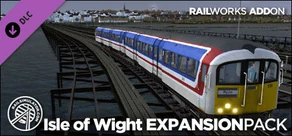
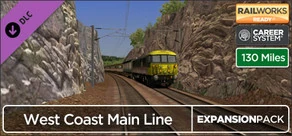
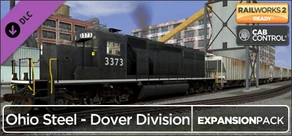



























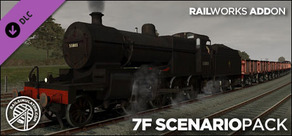 " width="292" height="136" class="image" type="image" />
" width="292" height="136" class="image" type="image" />
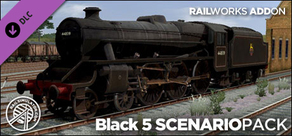 " width="292" height="136" class="image" type="image" />
" width="292" height="136" class="image" type="image" />
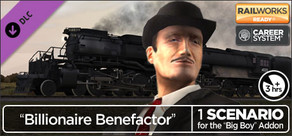 " width="292" height="136" class="image" type="image" />
" width="292" height="136" class="image" type="image" />
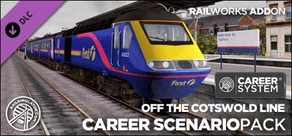 " width="292" height="136" class="image" type="image" />
" width="292" height="136" class="image" type="image" />